Team
Academic
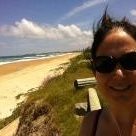
Prof. Moninya Roughan PhD
Prof. Moninya Roughan PhD
Group Leader
Dr Moninya Roughan's work focusing on improving dynamical understanding of the coastal ocean including physical forcings, nutrient enrichment processes and their biological impact. Moninya uses a combination of observations and numerical models to study the Oceanography of the East Coast Region and coordinates research in this field. She is also co-leader of the NSW node of Australia's Integrated Marine Observing System (IMOS) and oversees the Physical oceanography component of NSW-IMOS.
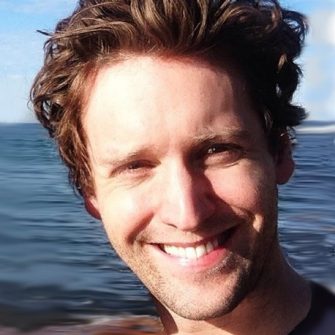
Shane Keating PhD
Shane Keating PhD
Associate Professor
Shane's research combines applied mathematics, observations, and modelling to deepen our understanding of ocean eddies and their role in the Earth's climate and biosphere. His interests include ocean state estimation, satellite remote sensing, ocean eddy parameterization, and geophysical fluid dynamics.
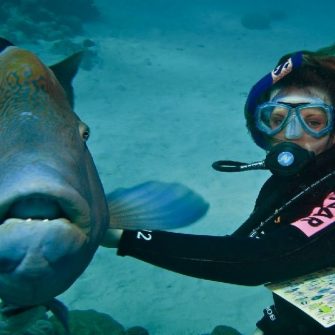
Amandine Schaeffer PhD
Amandine Schaeffer PhD
Senior Lecturer
Amandine is interested in regional ocean dynamics. She currently focuses on marine heatwaves, frontal eddies, cross-shelf transport and upwelling along the Eastern Coast of Australia, predominantly from in situ observations, including ocean gliders, HF radars, moorings and ship-based samplings. She is now also teaching as a lecturer in the school of Maths. During her PhD at the Mediterranean Institute of Oceanography, she investigated the representation of meso/sub-mesoscale dynamics in a high resolution ocean model of the Gulf of Lions (Mediterranean Sea).

Colette Kerry PhD
Colette Kerry PhD
Postdoctoral Research Associate
 Colette is interested in studying ocean dynamics through the combination of dynamical ocean modelling and ocean observations. She has expertise with the Regional Ocean Modeling System (ROMS) and its 4-Dimensional Variational (4D-Var) data assimilation tools. Colette began her career as a coastal engineer, conducting a variety of hydrodynamic and wave modeling studies for the oil and gas industry, government bodies and other clients. In 2010 she moved to the University of Hawaii to do her PhD in Physical Oceanography at the School of Ocean and Earth Science and Technology. She used ROMS to study the interactions between internal tides and the eddying ocean circulation and the implications for predictability in regions that contain significant energy at both dynamic scales. At UNSW, she is developing a data-assimilative model of the East Australian Current (EAC) region using ROMS and 4D-Var, and assimilating a variety of data sources including those collected as part of Australia's Integrated Marine Observing System (IMOS). The project aims to advance our understanding of the dynamics of the EAC and identify how we can best observe this oceanic region to improve model estimates and predictions.
Colette is interested in studying ocean dynamics through the combination of dynamical ocean modelling and ocean observations. She has expertise with the Regional Ocean Modeling System (ROMS) and its 4-Dimensional Variational (4D-Var) data assimilation tools. Colette began her career as a coastal engineer, conducting a variety of hydrodynamic and wave modeling studies for the oil and gas industry, government bodies and other clients. In 2010 she moved to the University of Hawaii to do her PhD in Physical Oceanography at the School of Ocean and Earth Science and Technology. She used ROMS to study the interactions between internal tides and the eddying ocean circulation and the implications for predictability in regions that contain significant energy at both dynamic scales. At UNSW, she is developing a data-assimilative model of the East Australian Current (EAC) region using ROMS and 4D-Var, and assimilating a variety of data sources including those collected as part of Australia's Integrated Marine Observing System (IMOS). The project aims to advance our understanding of the dynamics of the EAC and identify how we can best observe this oceanic region to improve model estimates and predictions.
Research associates
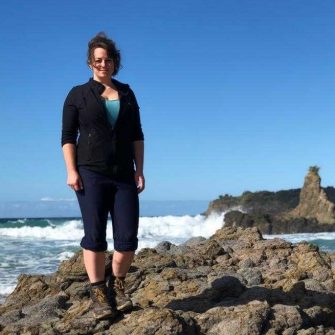
Véronique Lago PhD
Véronique Lago PhD
Postdoctoral Research Associate
Véronique is a post-doctoral data scientist working on the Fish-SOOP program in collaboration with the fishing industry to put Moana temperature sensors on fishing equipments. Prior to this position, Véronique worked as a post-doctoral scientist at the Climate Change Research Centre at the UNSW looking at the effect of the newest estimates in Antarctic ice sheet melting on the Antarctic Bottom Water formation. Véronique also worked at the Australian Institute of Marine Science on a project to optimise interventions for the preservation of the great barrier reef. Véronique completed her PhD in a joint program between CSIRO and UTas in Hobart, Tasmania, decomposing the effect of surface forcing on the ocean interior. She also worked in Canada on the impact of Greenland's ice sheet melting on the deep water formation and subpolar circulation and worked at sea in the Canadian Arctic as part of the IPY-CFL and ArcticNet projects.
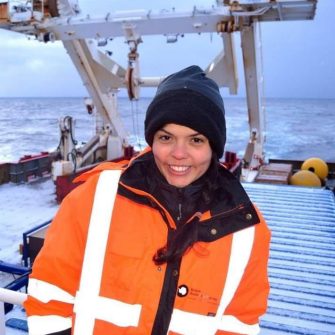
Marina do Valle Chagas Azaneu PhD
Marina do Valle Chagas Azaneu PhD
Postdoctoral Research Associate
Marina is a physical oceanographer currently investigating the complex dynamics of eddies and their interactions, characterising the frontal-scale physical and biogeochemical processes within the East Australian Current system. Previously, Marina worked as a post-doctoral scientist at the University of East Anglia (UEA, UK) studying air-sea interaction and extreme precipitation events in the eastern Indian Ocean using models and ocean glider data. At UEA, Marina also completed her PhD investigating the dynamics of Antarctic coastal currents and their interaction with atmosphere and cryosphere. She completed her Bachelors and Masters degree in Brazil, at the Universidade Federal do Rio Grande (FURG, Brazil), also studying the role of the Southern Ocean in the world's changing climate. As an observational oceanographer, Marina loves being at sea playing with new toys.
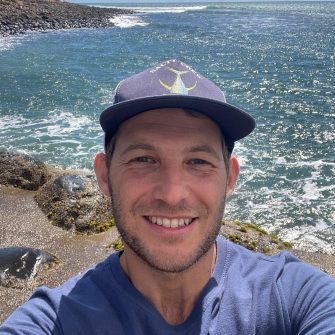
Phellipe Pereira Couto MSc
Phellipe Pereira Couto MSc
Postdoctoral Fellow
Phellipe is a physical oceanographer in our South East Australian Coastal Ocean Forecast (SEA-COFS) team. He leads the near-real time aspects of the East Australian Current (EAC) modelling efforts. He specialises in developing tools and workflows for near-real time model data generation and dissemination.
Before joining the team, Phellipe worked as a coastal hydrodynamic modeler and scientific software developer at Metocean Solutions / Meteorological Service of New Zealand (MetService), where he contributed to numerous hindcasts and operational forecast model implementations and products for a wide range of global applications. He earned his Bachelor's degree (UFPR) and Master's degree (UERJ) in Brazil, during which he conducted research at the Instituto de Estudos do Mar Almirante Paulo Moreira (IEAPM, Brazilian Navy), studying the effects of wind variability on coastal upwelling dynamics and continental shelf circulation.

Robert Mason PhD
Postdoctoral Fellow
Robert is working on the investigation of ocean dynamics in south-east Australian waters using observational data and the Coastal and Regional Oceanography Lab’s ocean model. Prior to joining UNSW, he was a CSIRO Early Research Career Fellow during which he validated hydrodynamic, Lagrangian and individual-based models for predicting the oceanic dispersal of coral larvae following mass coral spawning. He also worked as a Postdoctoral Fellow at the University of Queensland, using the output of atmosphere-ocean general circulation models to forecast future scenarios for the health of the Great Barrier Reef. He has an undergraduate degree in biology from Macquarie University, a MSc in Applied Mathematics from Imperial College London, and a PhD in Marine Biology and Biological Oceanography from the University of Queensland
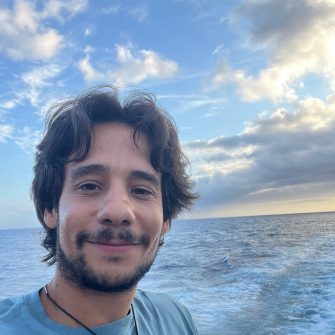
Cláudio Cardoso MSc
Postdoctoral Fellow
Cláudio is a physical oceanographer at UNSW, where his research combines numerical models and in-situ observations to investigate regional ocean dynamics.
He did his PhD at the Faculty of Sciences, University of Lisbon, in collaboration with ARDITI – Agência Regional para o Desenvolvimento da Investigação, Tecnologia e Inovação – and Helmholtz-Zentrum Hereon. His doctoral research focused on the shallow oxygen minimum zone of the Eastern Tropical North Atlantic off the northwestern African coast, using outputs from the coupled physical–biogeochemical model ROMS-PISCES.
Originally from Madeira Island, Cláudio has a long-standing interest in island-ocean interactions, particularly the role of mesoscale eddies. He is also engaged in Lagrangian particle simulations and the development of Eulerian-Lagrangian approaches to study the historical evolution of water masses and their associated biogeochemical tracers.
Technical

Tim Austin PhD
Tim Austin PhD
Ocean Research Technical
Tim looks after the NSW-IMOS Moored Scientific Arrays at Solitary Islands Marine Park and Batemans Marine Park and manages upkeep of electronic scientific equipment. Tim handles ADCP, Acoustic Release and Tracker technicals and is responsible for data processing, QC and uploading.
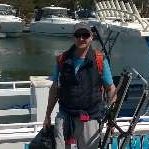
Stuart Milburn MSc DipSci
Stuart Milburn MSc DipSci
Ocean Research Technical
Stuart works with the NSW-IMOS Technical Team looking after NSW-IMOS Moored Scientific Arrays . He specialises in operational oceanography and provision of Metocean data for environmental observation and monitoring using instrumentation including Teledyne RDI, Aquatec, Seabird, Zebra-tech, Xylem systems. Current and past projects include Moorings Facility and QA/QC, Sydney Harbour Marine Observatory, Numerical Modelling, Australian Ocean Gliders, Moana Project.
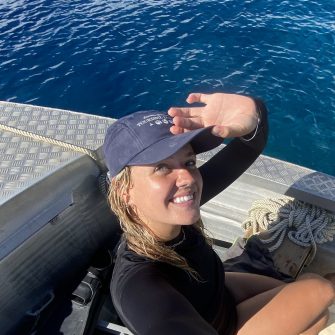
Stella Caon
Stella Caon
Research Assistant
Stella is a Marine Scientist who undertook her bachelors at Deakin University in Victoria. She is apart of the FishSOOP team and her role involves field work, inventory management, and delivery of data reports back to fishers and organisations primarily in the Pacific, in collaboration with the Pacific Community (SPC).

Ollie Sherb
Ollie Sherb
Research Assistant
Ollie is part of the moorings team, assisting with the maintenance, preparation, deployment and recovery of oceanographic instrumentation, including ADCPs, Seabird CTDs, Aquatech PTs and acoustic releases. He is also involved in data processing, quality control and data management to support ongoing oceanographic research.
Project Officers
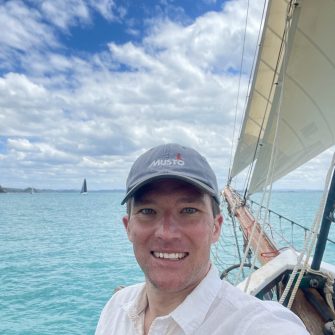
Matt Irwin
Matt Irwin
Project Officer
Matt is a former naval officer from the UK with 13 years of experience at sea in navigation and operational planning roles. He has an undergraduate degree in Biological Sciences and a master’s degree in Business Administration. His role is to manage and coordinate research projects, funding, and events on behalf of the team.
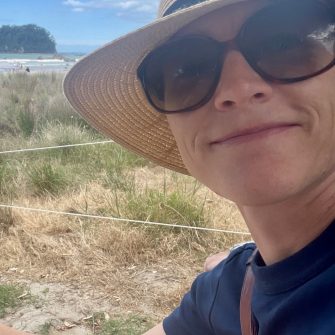
Sarah Franklin
Sarah Franklin
Project Officer
Sarah worked for 17 years facilitating the use of expatriate remuneration data and managing comprehensive policy review projects for clients around Australia, New Zealand and the Pacific Islands. Her role at UNSW is to manage and coordinate research projects on behalf of the Oceanography team.
PhD Candidates

Connor Henderson
Connor Henderson
PhD candidate
Connor completed his Masters at UBC where he studied how varying the eddy generation mechanisms in a western boundary current impacted eddy effects. At UNSW he is studying the mechanisms behind eddy tilting and how they interact with the EAC and the shelf. Eddy tilting is thought to play an important role in coastal dynamics on Australia's most populous coast.
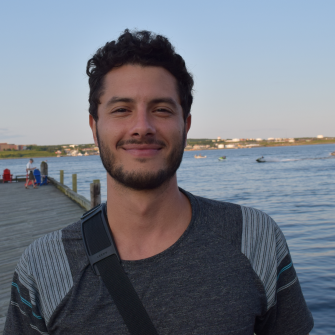
Fernando Sobral
Fernando Sobral
PhD candidate
Fernando completed his Masters at Federal University of Rio Grande (FURG - Brazil) studying beach morphodynamics mostly using remote sensing and observations. He then decided to explore a wide range of areas in physical oceanography, including numerical modelling and as a member of the Brazilian coastal monitoring system. In industry, he was responsible for real-time data processing and operational forecast system maintenance. Now as a PhD student, he is aiming to understand better the heat transport driven by eddies along the EAC system from observational data and modelling outputs.
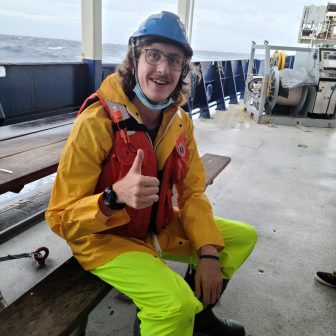
Luke Matisons
Luke Matisons
PhD candidate
Luke completed his Bsc (Honours) at Murdoch University in Western Australia where he studied the relationship between neuston assemblages (e.g., fish and lobster larvae) and regional and mesoscale oceanography. He also has experience working in the Indian Ocean as part of the second International Indian Ocean Expedition (IIOE-2). As a PhD student, he is studying the dispersal characteristics of eddies in the EAC using drifters and Lagrangian particle tracking to better understand the impacts mesoscale and submesoscale dynamics have on the populations of marine organisms.

Xiaowen Zhu
Xiaowen Zhu
PhD candidate
From Ocean University of China, Xiaowen is currently at the Coastal and Regional Oceangraphy as part of her PhD. Her primary focus is on ocean data processing and the large-scale effects of ocean waves. Her work includes high-resolution processing of ocean wave model data and utilizes non-stationary sea surface temperature (SST) data to predict wave patterns. During her time at UNSW, she will concentrate on identifying mesoscale eddies and addressing energy-related issues.

Siyi Song
Siyi Song
PhD candidate
Siyi completed her bachelor's degree at Ocean University of China, where she participated in and completed a Student Research Development Program (SRDP). In the SRDP project, Siyi focused on the variability of the Arctic melting point. In her underground thesis project, she retrieved Melt Pond Fraction (MPF) based on Tanaka et al. (2016,2020)'s Advanced Microwave Scanning Radiometer (AMSR) algorithm. She also compared and analyzed the correlation between different AMSR MPF data and the MPF from visible light data. Finally, she used the sea ice concentration (SIC) data to correct the AMSR MPF results. At UNSW, she will focus on issues related to the generation mechanism, seasonal variations, and interactions of mesoscale eddies.
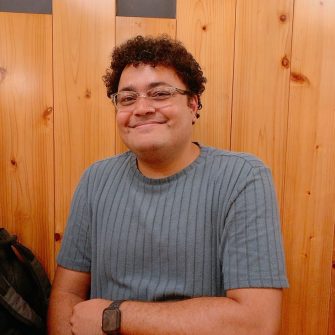
Max Tukana
Max Tukana
PhD candidate
Max completed his Bachelor of Science (BSc) degree at the University of the South Pacific and has a research background in marine conservation, with a specific focus on lobsters, octopus, and coconut crabs. Additionally, he completed a Master of Science (MSc) degree at Kyoto University (Japan), where he investigated the influence of freshwater raphidophytes on the formation potential of disinfection byproducts. As a PhD student, he will concentrate on enhancing the tuna industry in Fiji and Australia through the utilisation of oceanographic instrumentation mounted on tuna fishing vessels.
Master's Candidates

Reg Dowse
Reg Dowse
Master's candidate
Reg Dowse is a Master’s by research student in Oceanography at UNSW. His research focuses on characterising ocean eddies through the development of new geometric algorithms applicable to numerical models and sparse observational datasets. He previously earned First Class Honours in Applied Mathematics at UNSW. Reg is passionate about the ocean and enjoys surfing and ocean swimming in his free time.

Claire Hodgman
Claire Hodgman
Master's candidate
Claire is originally from Tasmania and completed her Bachelor of Science at the University of Otago (New Zealand), majoring in Geography and minoring in Politics. Her studies allowed her to explore both the physical science behind climate change and the broader issues of climate justice. She has since relocated to Sydney to pursue her Master’s degree, focusing on the role of citizen science in oceanography in Australia. Her research also highlights the importance of collaborating with coastal Indigenous communities who are experiencing cultural loss due to sea-level rise and ocean warming.
Affiliates
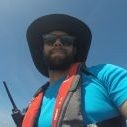
Neil Malan PhD
Neil Malan PhD
Climate Change Research Centre, UNSW
Neil focusses on using various combinations of observations and modelling to study Western Boundary Current dynamics, and particularly in how they scale down to impact the continental shelf. He completed his PhD at the University of Cape Town, South Africa on the impact of the Agulhas Current on shelf circulation and has also worked on tropical cyclones and subsurface intensified eddies in the Indian Ocean. His current interests include accurately quantifying cross-shelf exchanges at EAC separation zone, analytical modelling of submesoscale dynamics, and disentangling the various modes of the EAC and their impact on biophysical interactions.
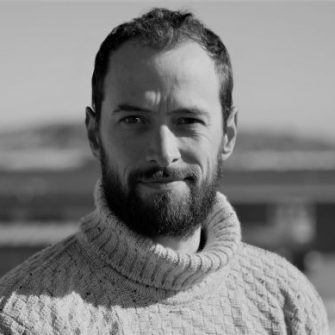
David Gwyther PhD
David Gwyther PhD
University of Queensland
David has a wide range of experience in numerical and observational oceanography. After completing his PhD at the University of Tasmania, he took up a postdoc exploring interactions between the Southern Ocean and Antarctica's ice shelves. He has experience with ocean simulations, climate variability, tidal analysis, glaciology and remote sensing, and has field work experience in the Southern Ocean and East Antarctica. His current research interests include improving the predictability of the EAC, including the drivers of change in WBC separation latitude and eddy shedding as well as the 3D representation of eddies in numerical models.
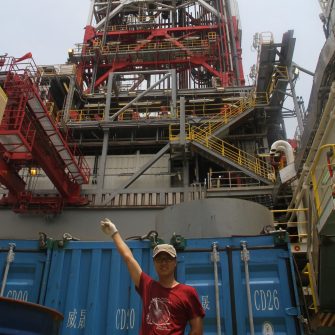
Junde Li PhD
Junde Li PhD
HoHai University China
Junde obtained his PhD degree in physical oceanography from the Ocean University of China. He is interested in using the ROMS to study the dynamical process in the tropical ocean, polar ocean and coastal ocean. He has investigated the relationship between sea surface salinity anomalies, equatorial undercurrent anomalies and the Indian Ocean Dipole. Within the framework of COAWST, he has coupled ROMS with CICE and configured this model in the Arctic Ocean. He also explored the wave-ice interactions with ROMS-Budgell model by including the wave-induced mixing and sea ice break-up. At UNSW, He focusses on the eddy-mean flow interactions in the East Australian Current system.

Paulina Cetina PhD
Paulina Cetina PhD
Center for Scientific Research and Higher Education at Ensenada (CICESE) Mexico
Paulina studied Oceanography (B.Sc) at UABC, Ensenada, BC, Mexico; obtained a M.Sc degree in Physical Oceanography from CICESE, Ensenada, BC, Mexico; and completed her PhD under the supervision of Professor Sean Connolly at James Cook University, Townsville, QLD, Australia. She is interested in the influence of ocean dynamics on ecological processes. Her PhD research investigated the transport of larvae along the Great Barrier Reef focusing on the effect of lee-reef eddies and organism’s life traits on the retention and supply of larvae close to reefs. Methods involved combining the use of hydrodynamic models and numerical experiments with theory and empirical data to disentangle physical mechanisms that drive larval transport. Paulina's work establishes mechanistic links between circulation patterns and the dispersal of larvae to envisage implications on population dynamics under different oceanic environmental conditions. Currently working as a Post- Doctoral Research Associate with Dr. Moninya Roughan, Dr. Erik van Sebille and Dr. Melinda Coleman exploring the long-term variability of the Eastern Australian Current and using a Lagrangian approach to determine how it shapes larval dispersal patterns.

Daniel Hewitt PhD
Daniel Hewitt PhD
Postdoctoral Research Associate
Dan is a biological oceanographer working to predict the occurrence of bluebottles (Physalia physalis) on Australian beaches. His focus is using a combination of observations (e.g., sightings), ocean observations and hydrodynamic model outputs to develop statistical models that can forecast 'sting risk' for beachgoers. He recently completed his PhD at UNSW in collaboration with NSW DPI Fisheries, where he used a combination of acoustic telemetry and biophysical modelling to investigate aspects of the fisheries ecology of Giant Mud Crab (Scylla serrata) in southeast Australia. Broadly, his current interests include animal movement, statistical modelling and applied research. He is also an avid (albeit amateur) cook.

Gaby Mayorga Adame PhD
Gaby Mayorga Adame PhD
Postdoctoral Research Associate
Gaby's research focuses on coastal ocean dynamics and bio-physical interactions in a changing ocean. Her expertise is the application of Lagrangian particle tracking models to study marine connectivity, applied to a variety of environmental issues including plastics pollution, invasive species dispersal, marine ecosystems resilience and the optimization of marine protected area networks. Before joining our group, Gaby was a research scientist at the Marine Systems Modelling group of the National Oceanography Centre in Liverpool, UK. She got a PhD in biological oceanography and a MSc in physical oceanography from Oregon State University, USA, and a BSc in oceanology from Universidad Autónoma de Baja California in Ensenada, México. As part of her bachelor's degree she completed an exchange year studying marine biology at James Cook University in Townsville, AU.
-
- Maxime Arnaud (2023)
- Taku Wagawa (2022-2023)
- Natacha Bourg (2019, 2023, 2024)
- Quintin Baumard (2019-2020)
-
- Dylan Wenman - Undergraduate research project (2024-2025)
- Youstina Elzahaby - PhD (2019-2023)
- Calvin Quigley - PhD (2019-2023)
- Daniel Lee - PhD (2019-2022)
- Eduardo Queiroz - PhD (2017-2021)
- Carlos Rocha - PhD (2017-2021) https://doi.org/10.26190/unsworks/21641
- Adil Siripatana - Postdoc (2019-2020)
- Steefan Contractor - Postdoc (2019-2020)
- Nina Ribbat - PhD (2014-2019)
- Louise Castro - MPhil (2018-2019)
- Matt Archer - postdoc (2016-2018)
- Amandine Schaeffer - Postdoc (2011-2017)
- Shivanesh Rao - Postdoc (2015-2017)
- Anthony Gramoulle - Intern (2015 - 2016)
- Linda Armbrecht - PhD Candidate (2011-2015)
- Dana White - Summer Intern (2013)
- Julie Wood - PhD Candidate (2010 - 2013)
- Sotiris Kioroglou - Data Scientist (2012-2013)
- Vincent Rossi - Postdoc (2010 - 2012)
- Helen Macdonald - PhD Candidate (2008-2012)
- Bradley Morris - NSW-IMOS Moorings Operations Manager (2009-2012)
- Gordon Macdonald - Electronics Technician (UNSW/UTS) (2011-2012)
- Guillaume Galibert - Data Scientist/Programmer (UTas) (2011-2012)
- Stuart Milburn - Masters Student (2010-2011)
- Brett Hallam - Vacation Student (2007-2008)
- Matthew Perrett - Vacation Student (2007-2008)
- Tess Pritchard - Undergraduate Project (S1 2007)
- Jeremy Badcock - Vacation Student (2006-2007, 2007-2008)
